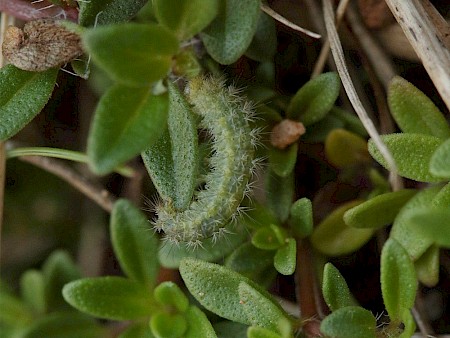45.033 BF1510
Thyme Plume Merrifieldia leucodactyla
([Denis & Schiffermüller], 1775)
Wingspan c.21 mm.
M. leucodactyla is widespread in Britain. It is more frequent in the south, and should be sought in habitats where Wild thyme (Thymus polytrichus) grows, such as on chalk, limestone, sea cliffs and stabilised dunes.
The adult flies by night from June to August, and is easily disturbed by day. The white abdomen has thin longitudinal light brown lines. The forewing of the female tends to be whiter than that of the male.
The larva starts feeding on thyme in late July or August. It is green with a white-edged dark green dorsal line. There is a dark green subdorsal line, and yellowish grey spiracular line. The head is yellowish green.
After overwintering, it pupates in the following June or July.
In western Ireland and the Lizard Point in Cornwall, its close relative, M. tridactyla, is found. The two species are very similar. Doubtful specimens, especially from Cornwall, should have their antennae compared with illustrations in Gielis, C., 1996. Microlepidoptera of Europe, Pterophoridae. or expert help sought. There has been much confusion in the names of these two species in the past.

 UKMoths
UKMoths 




